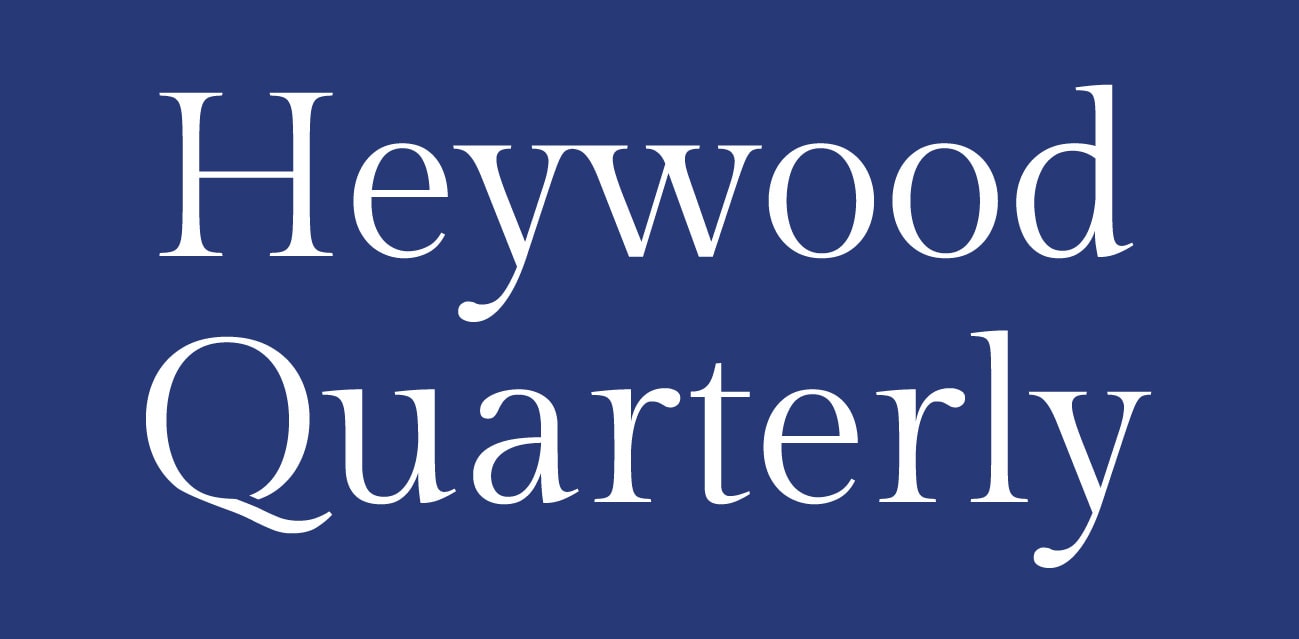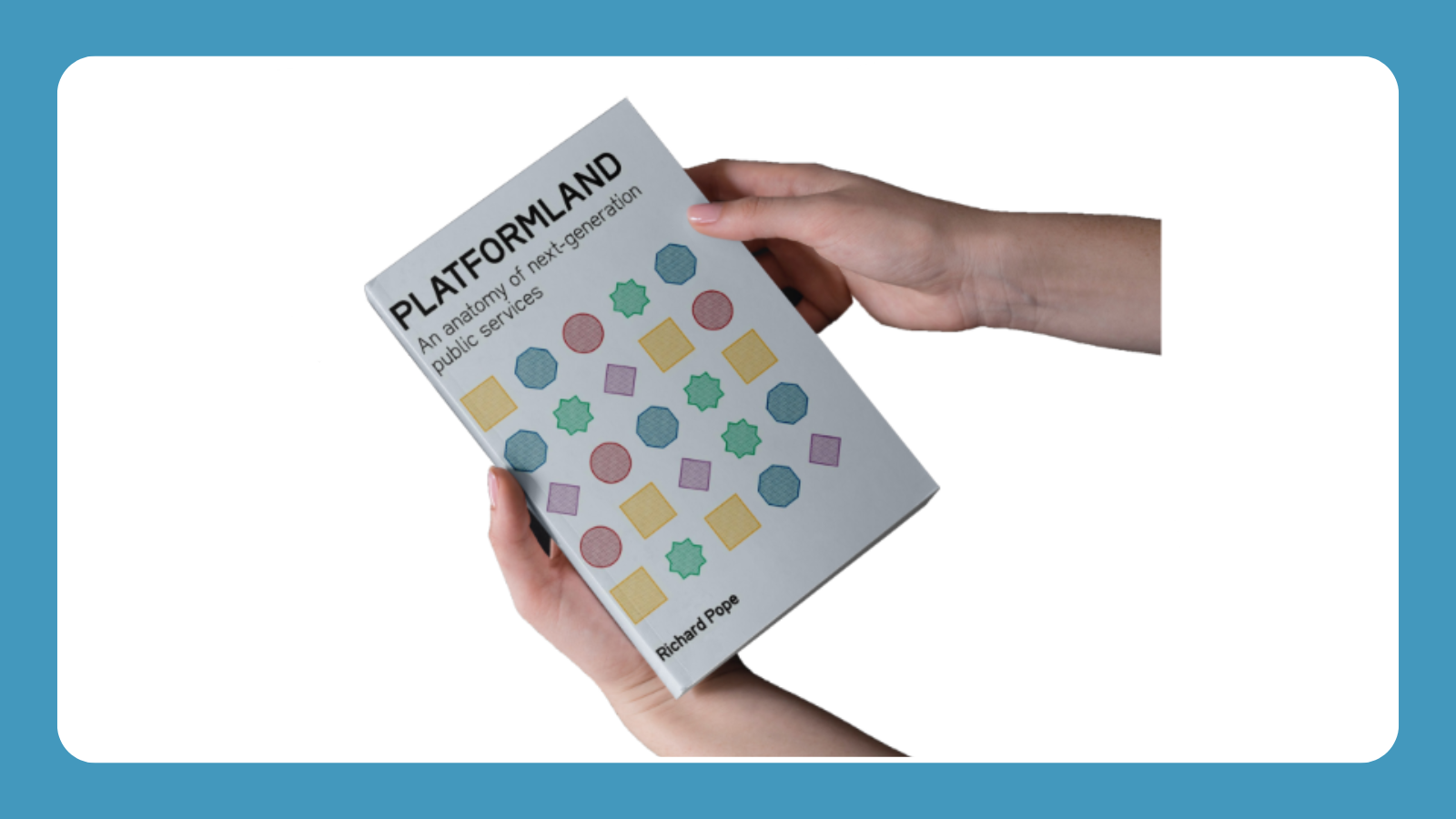James Plunkett reviews Platformland: An anatomy of next-generation public services, by Richard Pope, 2024
Everyone appreciates the power of digital technologies to improve public services. Yet, as the new Government realises, much of that opportunity remains untapped. A closer look at the history of technology helps us see why.
When we develop a new general-purpose technology, that technology presents us with a deal: we get new capabilities, but only if we adapt to its logic. Electricity only unleashed its full potential when factories reorganised around the assembly line. Similarly, digital technologies will only release their full potential when services work to a digital logic.
What is a digital logic? And how does this apply to public services? In Platformland, Richard Pope describes what he calls ‘the anatomy of next-generation public services’, and he shows how reforming services to fit this anatomy could transform the experience of citizens.
To understand Pope’s thinking, it’s useful to go back a couple of steps in the history of public sector digital work. In the early days, the word used to frame public digital work was ‘digitisation’. Each government department set up its own website; information was moved online; and some White Papers were even published on CD-Rom. It was a period of lifting and shifting, without much re-architecting, and the gains were minimal.
The Government Digital Service (GDS), founded in 2010, with Pope as an early team member, represented the first real attempt to adapt the state to a digital logic. GDS adopted working practices that had proven effective in the private sector: multidisciplinary teams and agile methods. It built a single government website, GOV.UK, breaking down the silos that had been reconstructed online in hundreds of departmental websites. Services weren’t just digitised, they were reimagined, guided by key design principles: ‘start with user needs’; ‘iterate, then iterate again’; and so on. In this way, a growing list of services – applying for a driving license or a passport – were transformed, becoming much quicker and easier to use, and cheaper to run.
From 2015, digital transformation sought to go deeper, guided by a new vision: the Government as a Platform. This started from the insight that most services are made up of a series of common steps: verify a person’s identity, book an appointment, send a confirmation, take a payment. In a digital world, each of these steps could be built once, as a platform, and shared by hundreds of services. This approach emulated the way thousands of private sector businesses were by now running on common platforms for everything from payments, to publishing, to transactions (e.g. PayPal, WordPress, and Shopify). It heralded a future in which public services would be assembled from Lego-like components, making service more efficient and responsive.
By the 2020s, the basic shape of digital-era public services had come into view. But this was still only an outline; a silhouette more than an anatomical diagram. And this is where Platformland comes in. What Pope gives us is the first detailed view of the anatomy of digital-era services, and, notably, how the components connect together. He also makes some important corrections to the way previous public digital work has been done.
Let’s start with the anatomy itself, the outline of which is familiar. Pope describes services using shared platforms and reusable components. This brings home how far we still have to go towards this vision, despite the best efforts of reformers. A decade on from the original push for shared platforms, the new Government’s One Login initiative is making another welcome attempt to build out the most obvious such platform, a single login for central government services.
But Platformland does much more than just restate the need for this basic architecture; it describes the components of services, and their connections, in detail. Pope is particularly compelling on data, explaining how APIs (Application Programming Interfaces) and digital credentials can connect services, escaping endless arguments about data sharing between departments.
With APIs, credentials and common data standards, departments don’t need to share data in full; a service can just request what’s relevant. If a person applies for a licence to sell alcohol, for example, the local council doesn’t need to access their full date of birth; they can just run a yes/no query of the relevant HMRC dataset: is this person over 18? The right architecture unlocks radically simpler user experiences.
We see a similar potential in Pope’s proposals for the design of next-generation services. He argues that we need new ‘surfaces’ for our interactions with the state – ways to curate information and tasks into one place.
The idea here is to learn from the ubiquitous design patterns of social media: the user profile, and the timeline (a history of activity, posts and changes). We can imagine, for example, a new parent’s GOV.UK account, with a timeline that prompts them to apply for child benefit, and register for a nursery. They are asked for permission to query the relevant data, which auto-confirms their benefit eligibility. Their nursery application is auto-populated from information already held elsewhere. They just have to check the form and click submit. Their timeline keeps them updated on the status of the application.
We see again in these examples how a new logic for public services – in this case a new visual architecture – can make things more seamless. And this takes us to Platformland’s two main critiques of previous public sector digital work.
First, Pope argues that public digital work has focused too narrowly on goals like saving money for individual services and departments, as opposed to making life easier for citizens. One consequence is that while services are simpler, the links between them remain complicated, leaving citizens to knit things together themselves. To address this, Pope says digital work should pursue a broader goal: reduce administrative burdens for citizens.
Second, Pope worries that the simplification of services can obscure accountability, especially when we aim for Silicon Valley minimalism. Services became glossy, like an iPhone, hiding their machinery. This makes things slicker, but it conceals the seams, eliding when authority passes from one agency to another. By hiding the legislation behind a service, we make it hard to see the origin and scope of an agency’s authority. The mistake we made, in essence, was to treat citizens as consumers.
The good news, Pope says, is that accountable services don’t need to be complicated. We just need to show the seams. A useful analogy is the Japanese craft of Kintsugi, in which broken pottery is fixed with gold, making the joins a feature of the design. We can then go further by offering people opportunities to give feedback, and even co-design future services. Over time, user-centred design matures into a deeper practice of citizen-centred design.
Pope says his hope for Platformland is to excite people again “about the possibilities of technology, design and democracy”. On first reading, that word, democracy, might seem out of place, but Platformland shows why it’s relevant.
Our main touch points with the Government are not in elections, but in our everyday interactions with public services. Each one of these interactions is a chance to enhance trust, or to deplete it. If we can build services that are reliable and responsive – as good in their delivery as the best of the private sector – that can help to repair our faith in public institutions.
With every passing week, these broader democratic and civic aspects of public digital work feel more relevant. It feels to me, now, that the biggest thing that’s changed about public digital work since GDS was founded is not the content of the work, but the context in which the work happens.
We are now much wiser about the harms that unfold when digital technologies are built in for-profit, under-regulated environments. And at the heart of this is perhaps the biggest issue of our times: the question of how we maintain a healthy, democratic public realm in a digital society.
To help us respond to this challenge, public digital work must go beyond making services quicker, easier, and cheaper. Indeed it feels increasingly clear that the big goal of public digital work is not so much to copy the experience we have of digital technology in the private sector, but to build an alternative.
This, for me, is what makes Platformland, and the Government’s ambitious new push on public digital work, exciting. If we can get this work right, the prize isn’t just better services, but a better functioning digital society.
James Plunkett is a writer and strategic consultant working on contemporary methods of government. He posts on Blue Sky, Medium and Substack.





